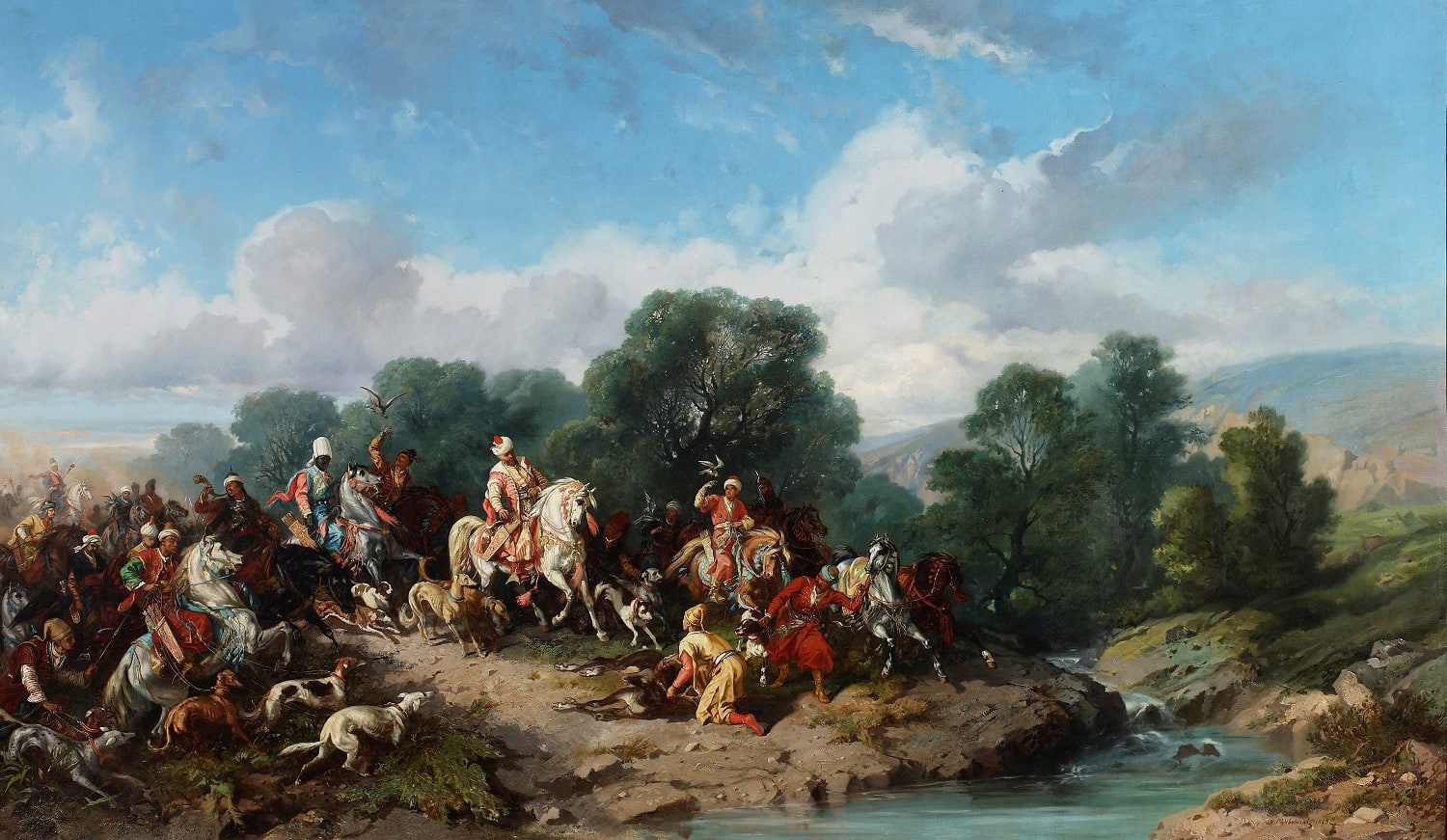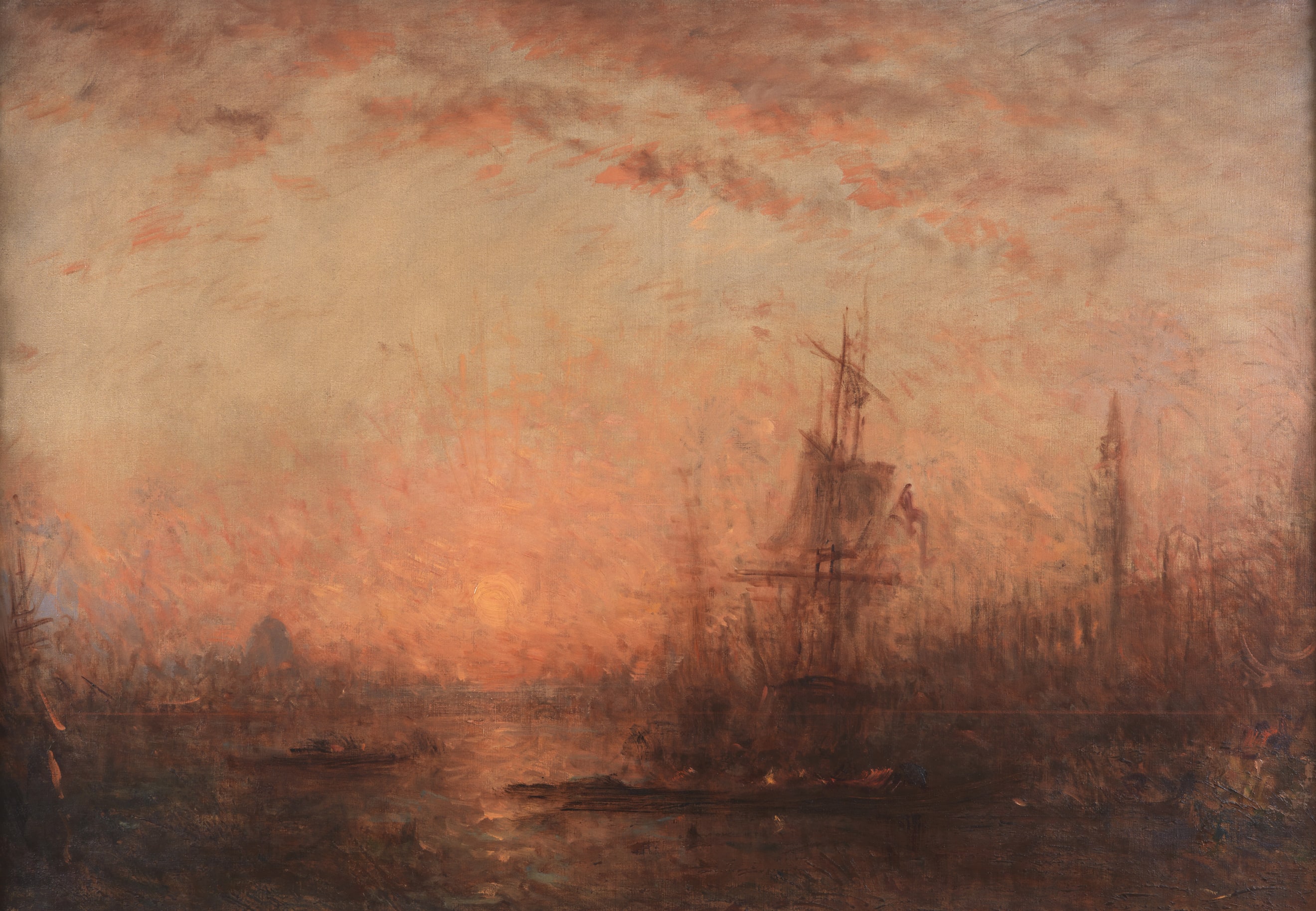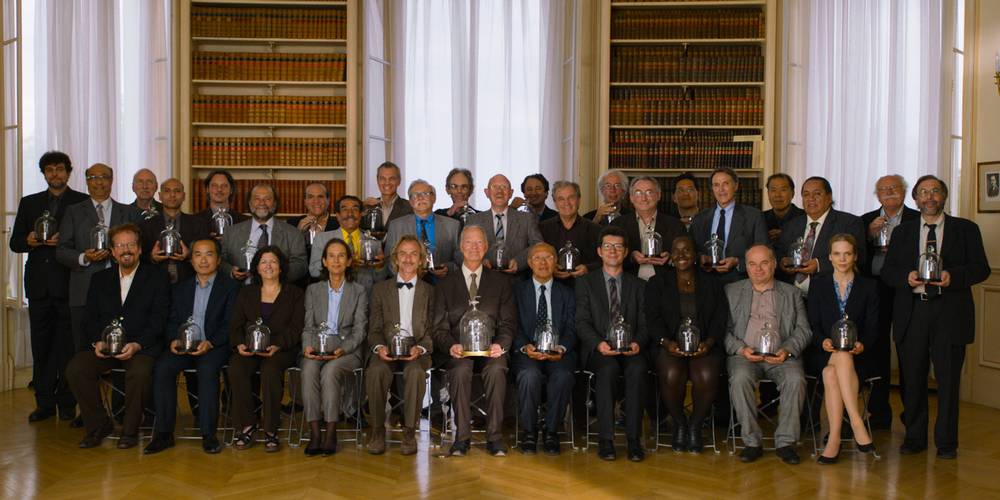07 November 2014

“Sultan Ahmed III Hunting With Falcons”, Stanisław Chlebowski, 1873. Oil on canvas, 111 X 189,5 cm. National Museum In Poznań.
This is one of Stanisław Chlebowski’s larger canvasses dealing with themes other than battles; only Ottoman Life at the Sweet Waters now at the Istanbul Military Museum can compare with it in size.
Hunting with falcons is a traditional sport of the Turkic peoples, and it is cultivated in Central Asia and in the Middle East to this very day. The Ottoman sultans maintained hunting preserves around Edirne (Adrianopole), to where the sultan’s court would relocate during the summer months. Sultan Mehmed IV (1648-1691) was known by the byname “Hunter” (Avcı), and his pursuits in the field certainly earned him this appellation. In fact, it is possible that it is this latter sultan whom Chlebowski actually pictured here, in that the facial features, beard, and light skin seen in the present piece correspond to the image of the sultan in the painting Hunting with Falcons.
The hunt is indubitably being held somewhere in the environs of Edirne, among hills and woods, with a river visible in the foreground. The central figure is that of the sultan –either Ahmed III (?), who ruled during what is known as the Tulip Period (1703-1730), or Mehmed IV. For that matter, we do not know exactly who entitled this painting Sultan Ahmed III Hunting with Falcons. In other words, this is an ahistorical scene, and Chlebowski painted the various items of clothing and weaponry on the basis of examples preserved from ages past, respectively, at the Topkapı Palace and at its Arsenal. During Chlebowski’s sojourn in Istanbul, traditional garb of the sort seen in this painting, what with sumptuous caftans and turbans, was receding in popularity, and European clothes were increasingly asserting themselves.
The sultan is depicted astride a white horse, with a large group of huntsmen approaching from the left and, close by, falconers with birds perched on their outstretched hands. A deer lies before the sultan’s horse; the scene is filled out with an assortment of hunting dogs, courtiers, and retainers on horseback and on foot. The sultan is clad in a light, reddish caftan with short sleeves and doublets draped on his back, lined with white fur and with braiding; underneath this overgarment, he wears a caftan with long, tapering sleeves. Beneath his soft textile sash is a dagger. His turban is wound from a white band of thin fabric on a conical red cap. A holster hangs at the sultan’s waist. The trappings of his steed are richly decorated. Riding behind the sultan on a grey horse is one of the saray’s highest dignitaries, the Head of the Black Eunuchs (Bab üs-Saade Ağası), wearing the distinctive mücevveze –headgear in the shape of a tall white cylinder.
The entire scene is laden with an electric tension, which is further amplified by the bright sky piercing through the heavy, dark clouds. The painting convincingly captures the Oriental splendour of the sultan’s hunting parties.
Prof. Dr. Tadeusz Majda

French artist Félix Ziem is one of the most original landscape painters of the 19thcentury. The exhibition Wanderer on the Sea of Light presents Ziem as an artist who left his mark on 19th century painting and who is mostly known for his paintings of Istanbul and Venice, where the city and the sea are intertwined.

In a bid to review the International System of Units (SI), the International Bureau of Weights and Measures gathered at the 26th General Conference on Weights and Measures on November 16, 2018. Sixty member states have voted for changing four out of seven basic units of measurement. The kilogram is among the modified. Before describing the key points, let us have a closer look into the kilogram and its history.
Tuesday - Saturday 10:00 - 19:00
Friday 10:00 - 22:00
Sunday 12:00 - 18:00
The museum is closed on Mondays.
On Wednesdays, the students can
visit the museum free of admission.
Full ticket: 300 TL
Discounted: 150 TL
Groups: 200 TL (minimum 10 people)